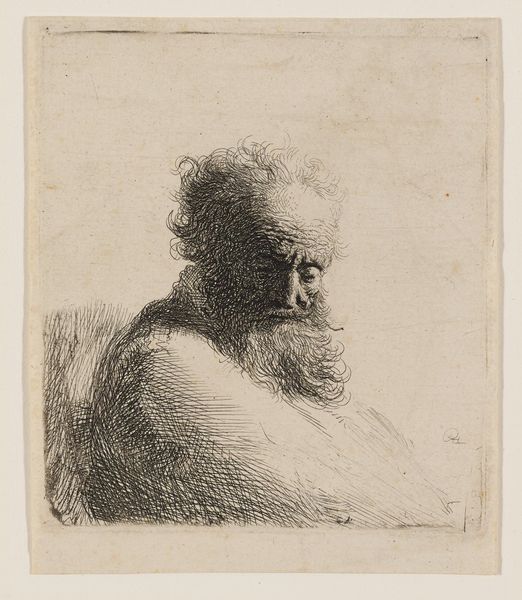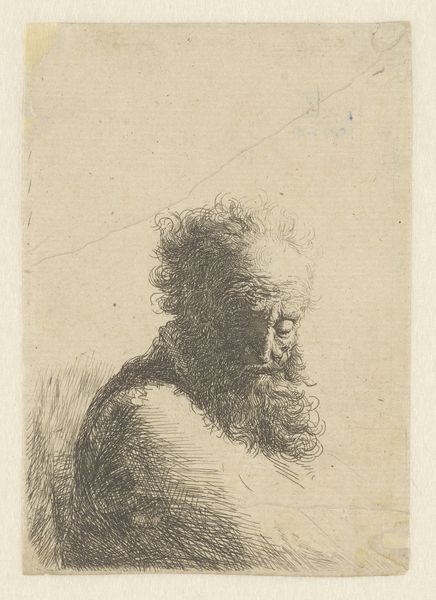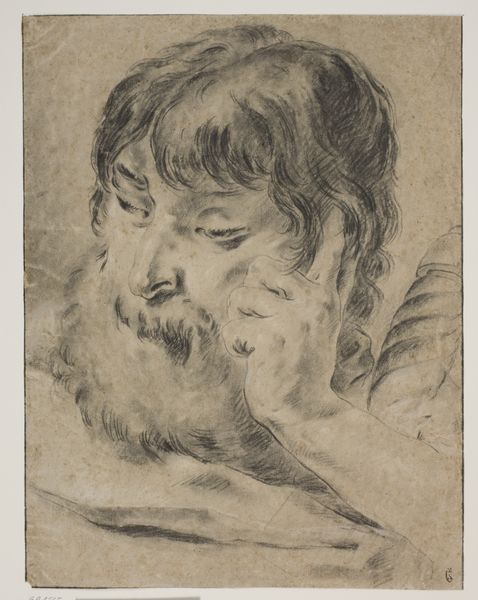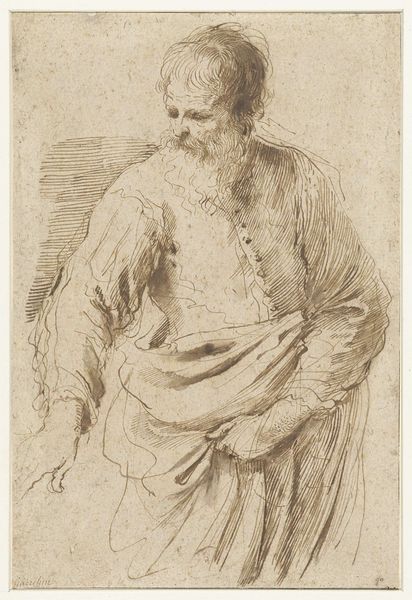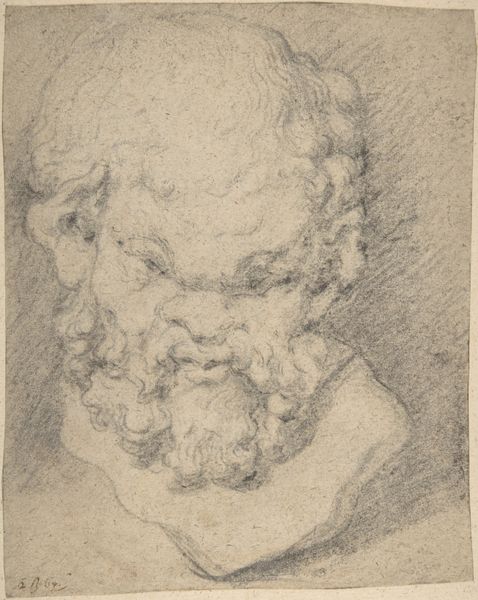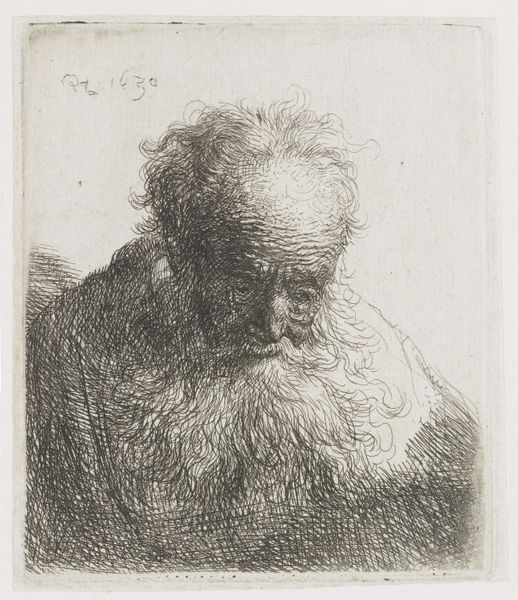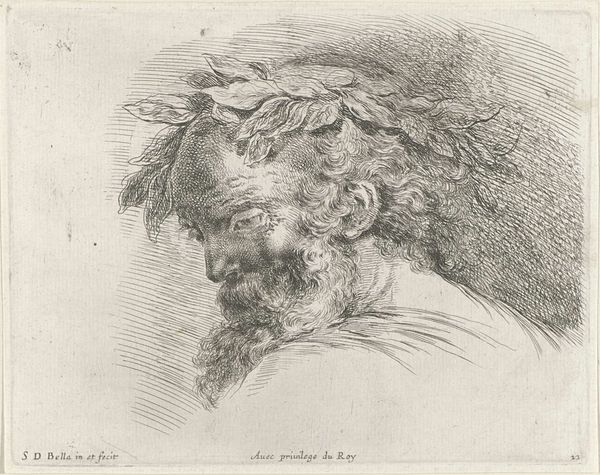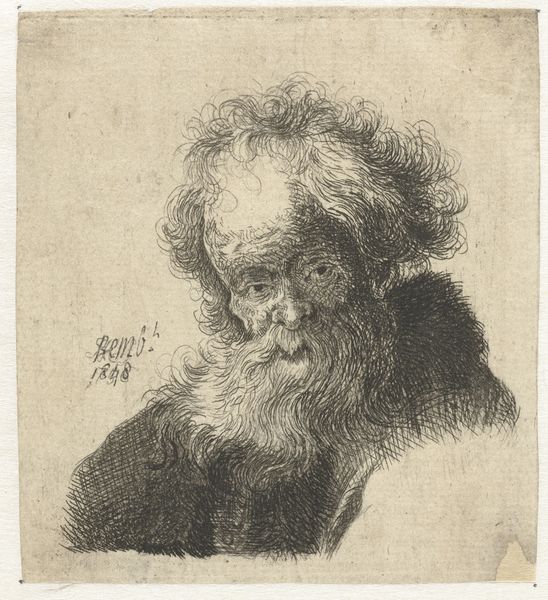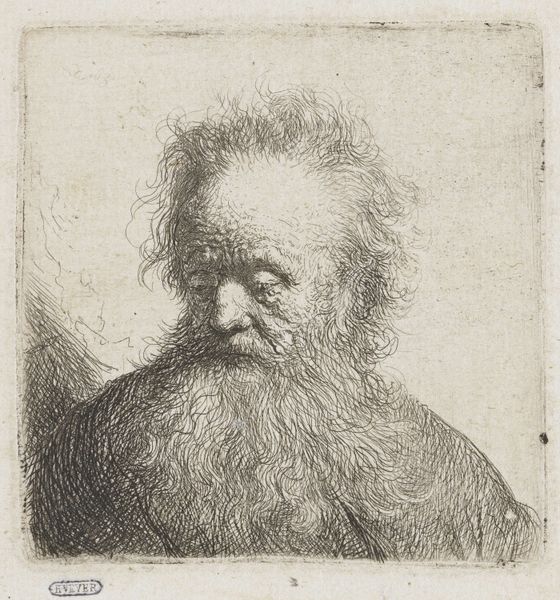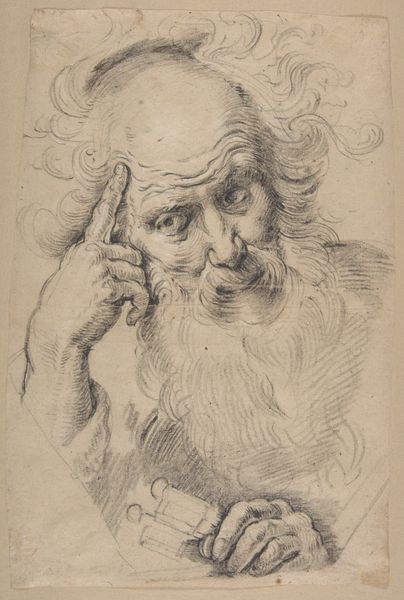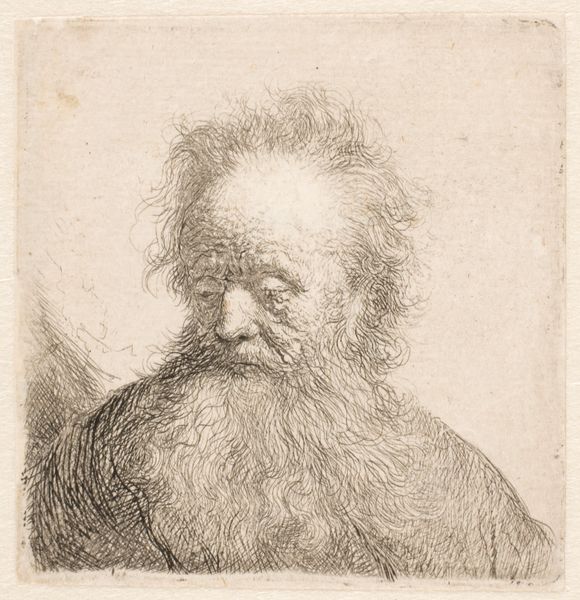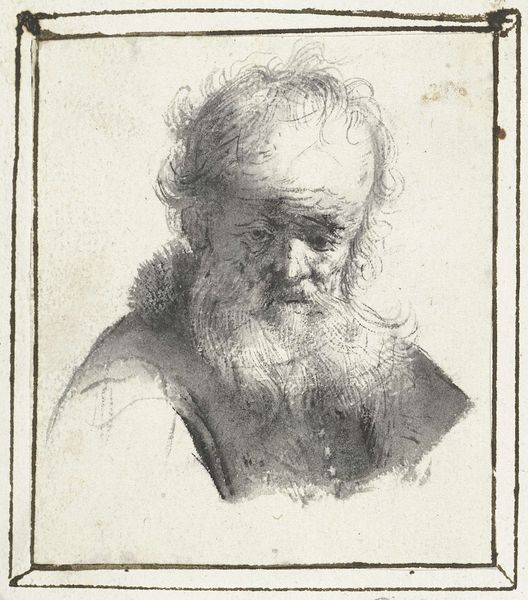
Bust of an old bearded man, looking down, three quarters right 1631
0:00
0:00
drawing, print, etching, pencil
#
portrait
#
drawing
#
baroque
# print
#
etching
#
pencil sketch
#
charcoal drawing
#
pencil drawing
#
pencil
Dimensions: height 120 mm, width 118 mm
Copyright: Rijks Museum: Open Domain
Curator: Welcome. Here we have Rembrandt van Rijn's 1631 etching, “Bust of an old bearded man, looking down, three quarters right," currently residing in the Rijksmuseum. Editor: Whoa, okay, instant reaction: This guy looks like he's carrying the weight of the world, you know? All those etched lines almost vibrate with sadness. Curator: The portrait as a genre really rose to prominence, alongside printmaking during the Dutch Golden Age, reflecting a burgeoning middle class eager to represent themselves. And artists like Rembrandt fed that appetite while elevating it, wouldn’t you say? Editor: Oh, absolutely. It's more than just a face; it's a mood. That deeply shadowed face… I’m feeling both respect and this almost painful empathy, like I know all his regrets or something. It reminds me of certain existential writers... I’m now hearing Beckett quotes in my head! Curator: Precisely! What's intriguing about Rembrandt is his interest in capturing human psychology and relatable expression, moving away from formal aristocratic representation, and the medium here--etching allows a detail of light and texture unparalelled at the time. Editor: I agree. I feel drawn into the fine cross-hatching... The way he uses light... you could get lost in those lines, the kind you see etched by weather into the skin. His hands seem unfinished, like a wisp of imagination. That choice highlights, maybe, that it’s the *man* that's really the point here, not surface realism. Curator: He clearly focuses our gaze—a subtle emphasis, underscoring the sitter's introspective state. This approach appealed to an expanding public readership increasingly eager to contemplate humanity, history, and individuality. Editor: True. It is like staring into a mirror, one that’s not polished but aged, reflecting the hard work, pain, or happiness of this old, lovely human. Curator: I'm fascinated by how context shapes our viewing, by how the museum shapes our interaction with such an image. I find my ideas and thinking confirmed thanks to you. Editor: Right back at you, pal! Getting up close to the mood is everything and the most subtle rendering can say all about the mood or experience of just, you know, existing in time.
Comments
No comments
Be the first to comment and join the conversation on the ultimate creative platform.

